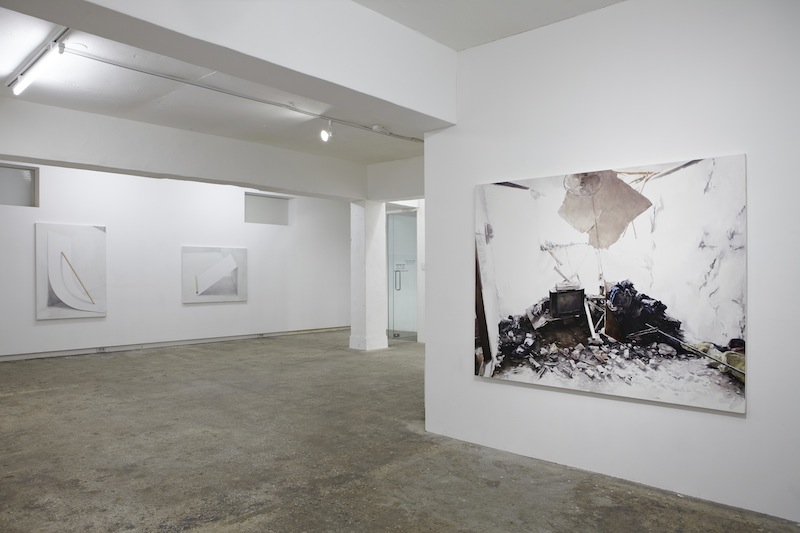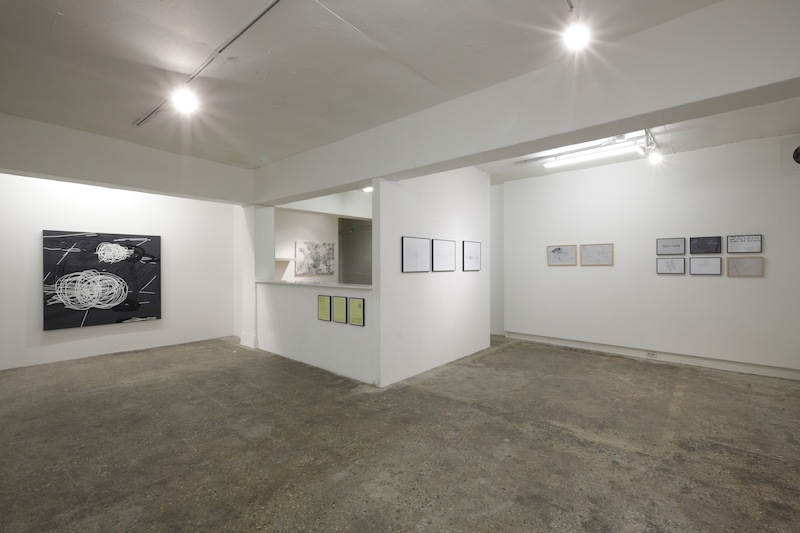2013-03-19
Interview with Kim Inseon
Willing 'n Dealing

Kim Inseon has been working for more than 15 years now in the Korean Art Scene and is specialized in Visual Arts. Inseon Kim worked for LOOP, an alternative art space after studying art history in New York. She got her experience from working in many galleries and curating the Busan Biennale, previously called PICAF Pusan International Contemporary Art Festival. Here Inseon Kim intended to present contemporary art in a more accessible way to the general public. Before opening her own alternative space and working as an art consultant for collectors, private companies and the Korean government, Inseon Kim worked in the Daelim Contemporary Art Museum, which is to promote excellence and achievement in the artistic community of the Seoul City area.
More than a year now, that Inseon Kim is directing her own space which provides a field for young artists and their development. She wants to allow the shift of the artist's focus from commercial driven activities to purely experimental ones. In her opinion especially emerging artists strike to set high prices on their works and exhibit in commercial galleries to become attractive to collectors. However, at the same time young artists fear the commercialization of their art work as well as the limitation the art market sets them.Willing n Dealing therefore does not only offer consultancy but also a space to experiment with art and develop artistic careers.
Arts Management Network: As an art consultant you are working closely with private collectors. The visual art scene in the last five years experienced a major peak as what collectivism is concerned. What happened? Does this peak is still going on?
Kim Inseon: In 2006/2007 collectivism suddenly became a trend caused by the Collectors saw the potential in private investment in art works. Key point: Hong Kong Christies auctions a Korean record sale in a pop art of pencils on May 28th 2007 created by the Korean Pop Art Star Hong, Kyung Taek. After this incident, private investors suddenly built their confidence in making money by investing in art. They quickly rushed into the art market which caused the prices in art work to increase. What drove collectors was not their passion and interest in art rather their greed for money. Many galleries and auctions were established during this time. People in the art scene hoped for the Korean Art to finally gain international fame. However, as any bubble no matter in economics or elsewhere bursts, collectors, mostly the ones investing to maximize profits, realized the need to make long-term investments when spending money on art works. 10 to 20 years waiting time until business is profitably. Investors that remained after many investors lost interest are the ones really interested in art.
AMN: What about international collectors? Are they interested in young emerging Korean artists?
Kim Inseon: The international fame for Korean artists in the visual art sector has not happened yet. South Korea has not built a deep understanding of the art sector. The general public sees it more as something different but still not yet explainable. It is a totally different world to them and many are not sure what all this art is about and what it is used for. One has to bear in mind that South Korea is a very industrial driven nation and within 60 years was able to become one of the highly developed countries and what high-tech and IT is concerned almost out pasting the United States and European countries. A deep consciousness and understanding about contemporary art has not been developed yet. Of course no one can doubt the rich Korean tradition as what food, rituals, music and religion is concerned. However, visual arts still play a very marginal role. As another example illustrates the work of a curator was not known to the public until just recently when on April 22, 2008, Leeum Samsung Museum of Art director-general and curator Hong Ra-hee resigned abruptly from her position after the attorney Kim Yong-cheols revelation that Samsungs founding Lee family had purchased foreign art works priced in the tens of billions of Won, including Roy Lichtensteins Happy Tears, with an illegal private fund. Through this scandal caused by the Samsung family, the public's interest in the arts rose as well as the knowledge about the job as a curator. One can say that the scandal at the end had a positive side effect.
AMN: Government has to take a crucial role in promoting the Korean art scene on the international stage. You are also taking part in consulting government officials of the Arts and Culture Department of South Korea. What do you advise them?

However, I can see the government's ambitions to promote the Korean art scene internationally by creating websites and offering them in English such as www.apro.go.kr or www.artro.go.kr. The first one collects and reveals articles, trends and interviews for the performing arts, the latter one for visual arts.
Government also reaches for consultancy from galleries, collectors, curators and art managers on how to promote more intensively the arts abroad. My three main advices are always the same: Firstly, less bureaucracy in terms of public funding for artists. Artists receiving public funds from the Korean government in order to exhibit abroad or participate in international festivals, art fairs, etc. have to become almost administrators, proving their expenditures very detailed. Many artists are reluctant to do so and do not want to spent time on administrating their work. The requirements for artists to receive public funding have to be facilitated. Secondly, the funding system in general needs adjustment. Right now three different institutions administer public funds to artists deriving from the the Ministry of Culture, Sports and Tourism: the Ministry of Culture, Sports and Tourism, the Arts Council Korea and the Seoul Culture Foundation. It is only possible to receive funds from one of the three institutions, the problem is, it is not sufficient for going abroad. My third advice is to invest more in inviting foreign curators, art managers to participate in special tours within the country, familiarizing them with Korean culture.
AMN: What is happening meanwhile in the country? How are young and emergent artists promoted in the own country?
Kim Inseon: The government is creating residency programs. The Seoul Museum of Art, funded by the government, for example invites artists to create art work for especial exhibitions. Museums start searching more intensively for young artists in alternative spaces, a tendency which was not common 10 years ago. Although there is a long way to go, I can see the visual art scene raising nationally as well as internationally. I have hope.
More information: www.willingndealing.com
The interview was led by Kira Potowski, correspondent, Arts Management Network
There are no comments for this content yet.
similar content
Art in Pandemic Times2021-02-17

